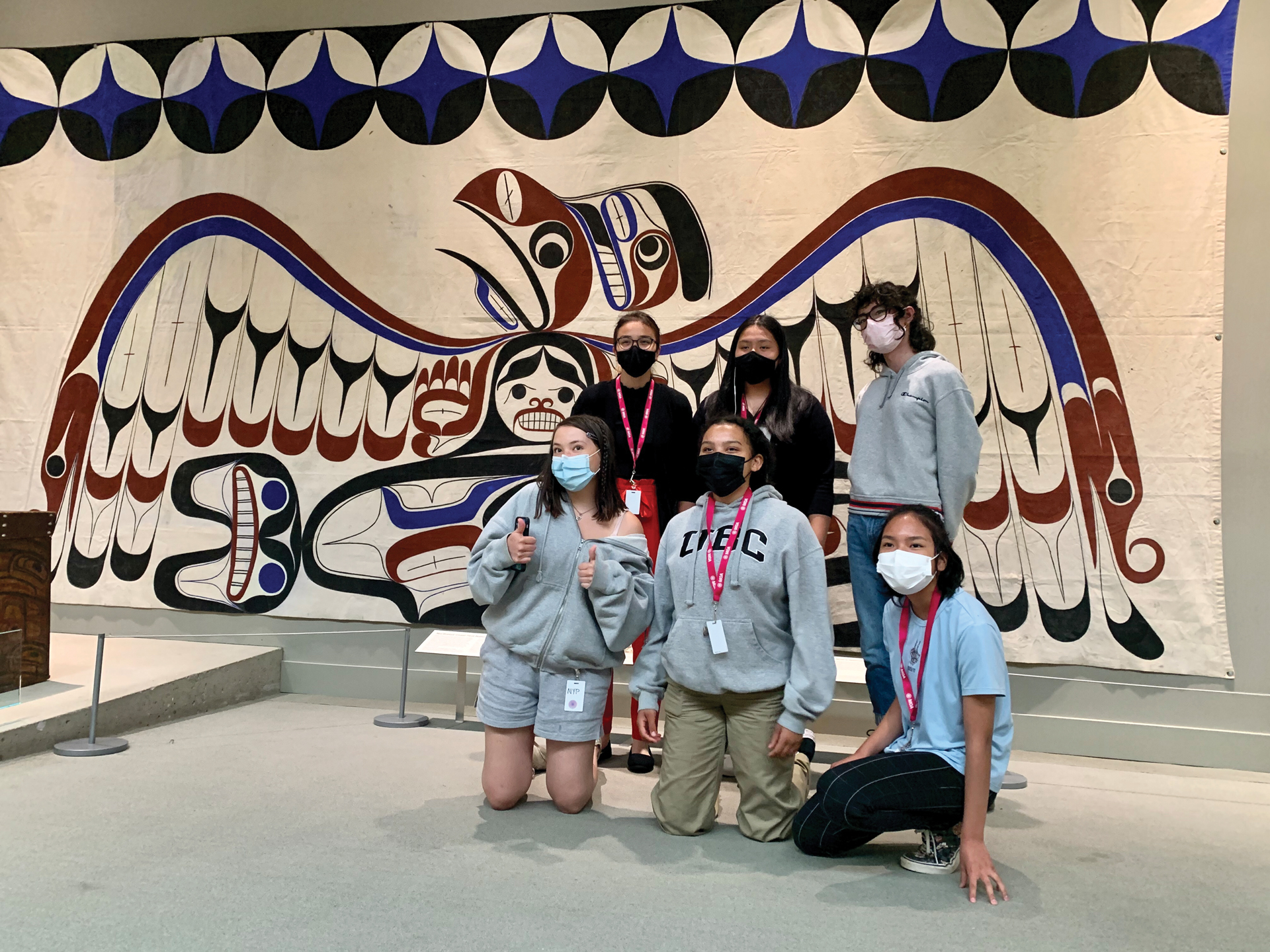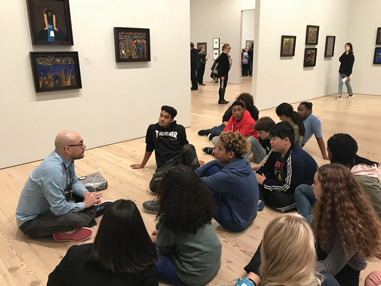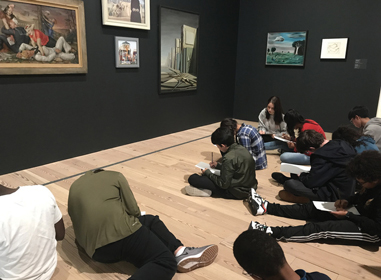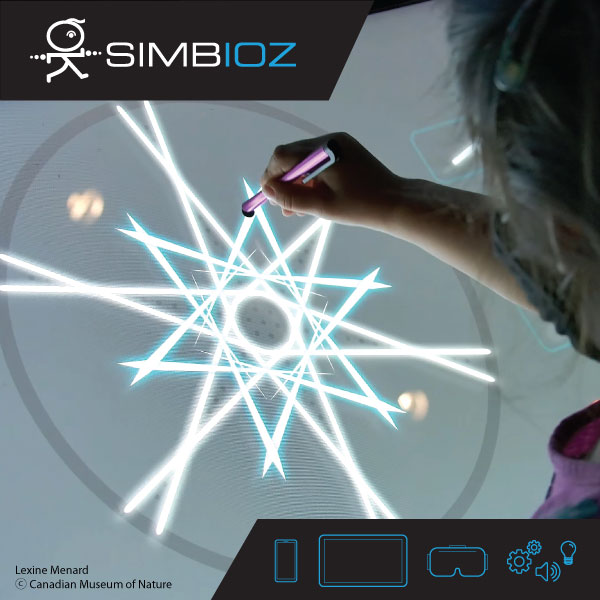Start Early: Reflections on the future of diverse workplaces
Ozoz Sokoh

2021 cohort of the Native Youth Program at the Museum of Anthropology at UBC
A few months ago, I graduated from the Museum and Cultural Management Program at Centennial College, Toronto and what an interesting journey that was! When I began, I knew very little about the history of the subject area and the practice. One of the early tasks we had was watching this TED video by J.V. Maranto which outlines the history of museums. Short and sweet, it made me think of how much museology — largely unarticulated — played a role in my childhood; I mean, we had a cabinet of curiosities where my mum and dad kept all their travel mementoes. I didn’t have the framework or language to understand it then, but I do now. Tools and resources like this can help as we begin to widen the view for People of Colour and develop long-term, sustainable, integrated solutions to diversifying art, museum and cultural spaces.

Photo — NYC Museum School
There are many ways to address the lack of representation and equity in museum and cultural heritage organizations. While hiring diverse candidates is important, the reality is that many people who could make excellent contributions to the field of museology are not encouraged to consider it as a career. To create a large pool of diverse museum professionals requires forethought in strategic planning and a commitment to taking action.

Photo — NYC Museum School
The path I’d like to explore begins early, long before the career pipeline narrows and pre-existing issues stemming from racism and discrimination make it difficult.

Photo — NYC Museum School
What would it look like if ‘recruitment’ happened much earlier, say during middle school and high school? What if, in addition to increasing numbers through employment, museums, cultural heritage organizations, alliances (in consultation with youth councils) came together to develop coaching-/mentoring- based recruitment models? What if in this phase, programs were developed and opportunities created for internships, cementing learning and creating pathways for post-secondary placements?

A Nova Scotia mineral identification card in progress. To complete the card, youth use various methods to test each mineral’s composition and categorize accordingly. Photo —Marlee van den Hoek

Photo — NYC Museum School
With a target audience beginning at least in grade 6 and continuing through the end of high school, here are some approaches for consideration:
Creating awareness of museology, roles and possible pathways
More awareness needs to be created regarding the roles and jobs available within the museum field. This could look like an accessible website showing key museum functions, general skills, subjects they might take in high school, options for studies (school listings), future job opportunities and possible pathways.
We must also find ways to ensure that museology is being discussed in art , literature, mathematics and other classes. In fact, many aspects of the existing curriculum could have museum work included by way of questioning/inquiry. The goal is to expand the definition and consideration of what museums are.


Photos — Sébastien Roy, © Pointe-à-Callière, Cité d’archéologie et d’histoire de Montréal
This type of outreach would require partnerships and collaboration between schools (middle, high, colleges, university), a network of coaches and mentors, including current museum students, youth councils and more.
It is also important to understand that this is not a short-term plan, think of it like a clinical trial that sometimes takes years. Collating information on schools with museum studies, museum educational departments thinking of fits between middle school curricula and areas to anchor some of these questions in, setting up processes, seeing which museums are interested in adding this to their strategic plans, etc.
Learning from successful models
When I first started this research, I couldn’t find many programs that represented the fulness of what I desired. I’m grateful to Michelle Moon of Saltworks Interpretive Services and Irina Mihalache, an Associate Professor of the Museum Studies program at the University of Toronto for sharing fantastic references with me. Here are some examples of well-developed programs that showcase the ability of museums to engage youth to consider careers in the museum sector.Native Youth Program
Native Youth Program (1978) is a summer program for urban Indigenous youth at the Museum of Anthropology, University of British Columbia. The longest-running Indigenous youth program in Canada, “The goal is to produce young Indigenous leaders, provide meaningful direction and mentoring, enhance employment opportunities ... and promote public understanding of the diversity and richness of Indigenous cultures within the UBC community.”
Nous Sommes Montréal
Nous Sommes Montréal (2018) at Pointe-à-Callière is an educational and cultural project exploring museum education, cultural mediation and the Museum’s civic action in partnership with a high school — students created stories and projects at the intersection of their personal histories and the varied histories of Montreal.
NYC Museum School
The NYC Museum School in New York City (1994) “provides college-level education with a project-based approach of progressive high schools, incorporating the Museum Learning Process™ (MLP) which emulates the critical thinking strategies of discovery modeled by the work of museum professionals. Supported by partners like the Metropolitan Museum of Art, the Museum of the City of New York, the Japan Society, and the Rubin Museum of Art, student access the rich resources of New York City’s premier historic, artistic, scientific, and cultural institutions.
Museum Explorers
Museum Explorers is a high school program by The Newark Museum of New Jersey (1995). Partially funded by the city and also by donors, “The Explorers Program is a college, career and life readiness program that enables Newark-area high school students to build essential skills and self-confidence through a curriculum that draws upon the Museum’s unique collections, resources, and staff. Every year, 40+ students from diverse backgrounds explore passions, strengths and skills are are paid. ‘Explorers rotate through internships in different areas of the Museum, leading student-designed projects to gain real-life experiencein different areas.’
Artlink
Artlink, The Peabody Essex Museum (PEM), Salem, Massachusetts. ArtLink, PEM’s community partnership program, is a fully subsidized out-of-school learning program for children and youth in grades K-12. It “offers a series of exhibition explorations paired with creative responses. These out-of-school learning experiences typically last 90 minutes and are offered Tuesdays through Fridays. Visit content focuses on themes developed in partnership with PEM’s Connected Learning Developer and the community organization prior to the start of the school year.”
Building on existing structures
Museums also have the opportunity to offer safe spaces for students. Many museums have been exploring alternative learning approaches and creating these spaces within their museums. Spaces that are open to interactions in a variety of ways, both organized and free-form. Students should be free to ‘get messy,’ engage, reflect and independently explore. Museums inspired to build these programs but lacking on-site space could explore collaborations with schools, creating mobile museums and taking the museum to schools; working with libraries and community centres in various ways, from setting up temporary exhibitions and installations to hosting discussions and learning sessions.
Assessing the needs of future students
Non-represented people are interested in museum studies but its current presentation is exclusive. Could surveys or focus groups help provide awareness, clarity? What would BIPOC students like? What support do they need, and critically, what knowledge is missing to help them on the journey?
More needs to be done to learn the needs of BIPOC students, what they are and aren’t interested in and what they would like to see. M
Ozoz Sokoh is a Nigerian food explorer + emerging museum professional focused on documenting West African food culture, history and heritage.
You can see more of Ozoz’s work on her blog, Kitchen Butterfly (https://www.kitchenbutterfly.com/) and through the Feast Afrique website (https://www.feastafrique.com/digital-library).
